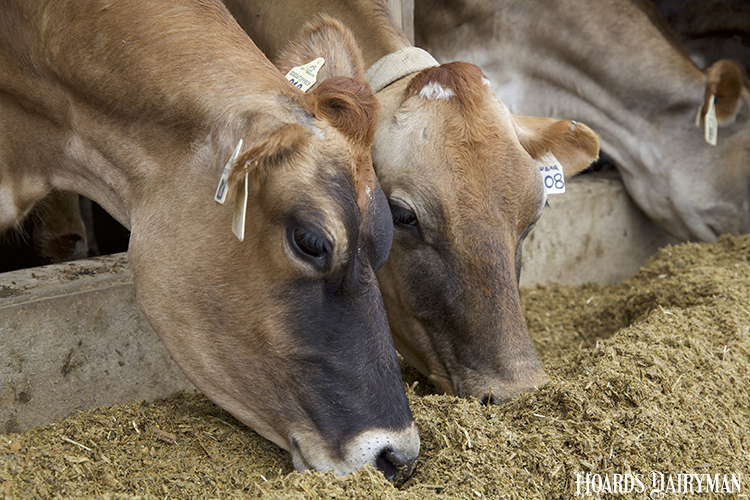
Summer is off to a hot and humid start in many parts of the United States, and there’s no doubt that cows have been feeling the impacts of heat stress. Farmers have options when it comes to helping cows beat the heat, but a combination of strategies is really the best approach.
During the Four State Dairy Nutrition and Management Conference, Phil Cardosa from the University of Illinois addressed heat stress and the role nutrition can play in keeping cows productive during hot weather.
“As the temperature heat index increases, it is very clear that milk losses will happen,” he shared. While a temperature heat index (THI) of 72 used to be the threshold, Cardosa pointed to recent research that showed milk yield and likely cow metabolism are impacted by a THI of 68.
Cardosa first turned his attention to water. “One of the nutrients that is most neglected on farms and is very important for heat stress is water,” he said.
In cool or warm seasons, higher milk production requires greater water intake. “Cows that produce more milk drink more water,” Cardosa stated.
Most of the water a cow ingests —71% — comes from the water it drinks, Cardosa explained. “That is why it is so important that we have water of quality to stimulate cows to drink,” he said.
Cardosa also addressed the minerals lost through sweat, noting that a cow in heat stress may be losing more minerals than a cow in its thermoneutral zone. In addition, the lack of rumination in a heat-stressed cow can lead to less saliva production. Saliva has a big buffering effect in the rumen, and this reduction is one reason cows with heat stress can be more affected by acidosis.
The University of Illinois established these recommendations on a few key minerals for summer rations, as a percent of dry matter: 0.40 for magnesium, 0.40 for sodium, and 1.20 for potassium.
Cardosa also reminded the audience about the importance of feeding for a positive dietary cation-anion difference (DCA) after calving. He said a positive DCAD of 250 to 400 milliequivalents per 100 grams of dietary dry matter (mEGkg DM) is adequate to maximize feed intake and milk production, in hot or cool environments. It is especially helpful, he said, in heat-stressed conditions when cows are losing bicarbonate and potassium.
While nutrition can play a role in heat abatement, Cardosa clarified, “There is no dietary magic pill.”
He said ration adjustments can improve the ability of the cow to go back to homeostasis, or a state of equilibrium that was in place prior to heat stress. Physical cooling mechanisms such as shade, fans, and soakers should be the primary heat abatement strategy, though.
“We aren’t going to fix everything with nutrition. We can help the cow go back to its normal state or keep it normal,” he summarized, “but we need to add those mechanical strategies as well.








